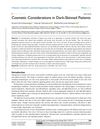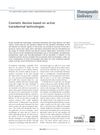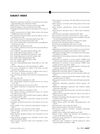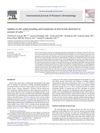Successful Treatment of Melasma Using a Combination of Microdermabrasion and Q-Switched Nd:YAG Lasers
January 2012
in “
Lasers in surgery and medicine
”
TLDR Microdermabrasion combined with Q-switched Nd:YAG laser is a safe and effective way to treat stubborn melasma.
The study assessed the safety and effectiveness of combining microdermabrasion, a topical regimen, and low-fluence Q-switched Nd:YAG laser treatment for melasma in 27 female subjects with phototypes II–V. The treatment, which was painless and required no anesthesia, resulted in >75% clearance of melasma in 81% of subjects and >95% clearance in 40% of subjects, with most showing >50% clearance after the first treatment. Side effects were minimal, and remission lasted at least 6 months. The procedure was effective across all skin types and required an average of 2.6 sessions, with excellent subject compliance due to significant improvement within 4 weeks.




